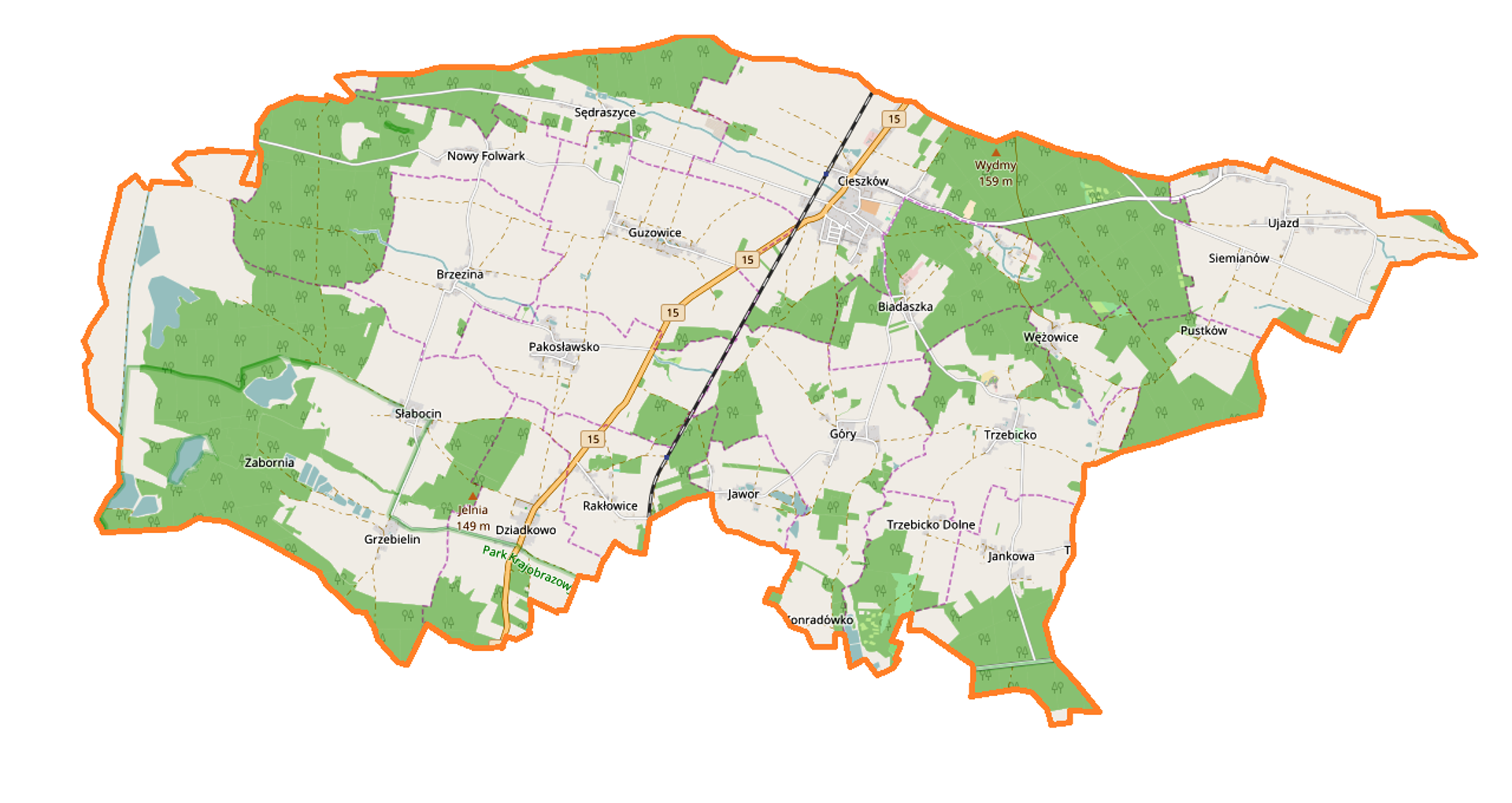Cieszkowo
6.17

Overview
Cieszków is a rural municipality located in the Lower Silesian Voivodeship, within Milicz County. Its administrative seat is the village of Cieszków, which is characterized by a rich history and interesting architecture. The municipality covers an area of 100.67 km², of which 59% is agricultural land and 32% is forest land, reflecting its green, natural surroundings. Cieszków was incidentally part of the Wrocław Voivodeship from 1975 to 1998 but is now part of a diverse region, bordering the municipalities of Jutrosin, Milicz, Sulmierzyce, and Zduny.
The residents of the municipality form a diverse community, with the population remaining stable in recent years—in 2004, it was home to 4,656 people, and by 2020, this number had slightly increased to 4,660. The municipality comprises 15 village councils (sołectwa) and several smaller settlements, such as Grzebielin, Pustków, and Zabornia, indicating its extensive settlement structure.
In terms of culture, Cieszków, like many places in the Lower Silesian region, boasts traditions that date back centuries. It is also important to emphasize that the history of this area is closely intertwined with the events that have taken place in Lower Silesia. Local festivals and cultural events, organized regularly by the residents, play a significant role in preserving folk traditions and fostering community integration.
Cieszków and its surroundings are exceptionally rich in natural and landscape attractions. The picturesque terrain and forests provide excellent conditions for various outdoor activities, such as hiking and cycling. Additionally, the forested areas are of great importance to local flora and fauna, serving as habitats for many protected plant and animal species.
An interesting aspect is the diversity of settlements within the municipality, ranging from rural hamlets to distinctive smaller towns, each with its own unique history and traditions. This makes Cieszków Municipality both an interesting tourist destination and a place to live for those seeking tranquility and natural surroundings. A key element of local identity is the residents themselves, who take pride in preserving their traditions and history, making this municipality valuable from both a cultural and natural perspective.
Location
2025 Wizytor | All Rights Reserved